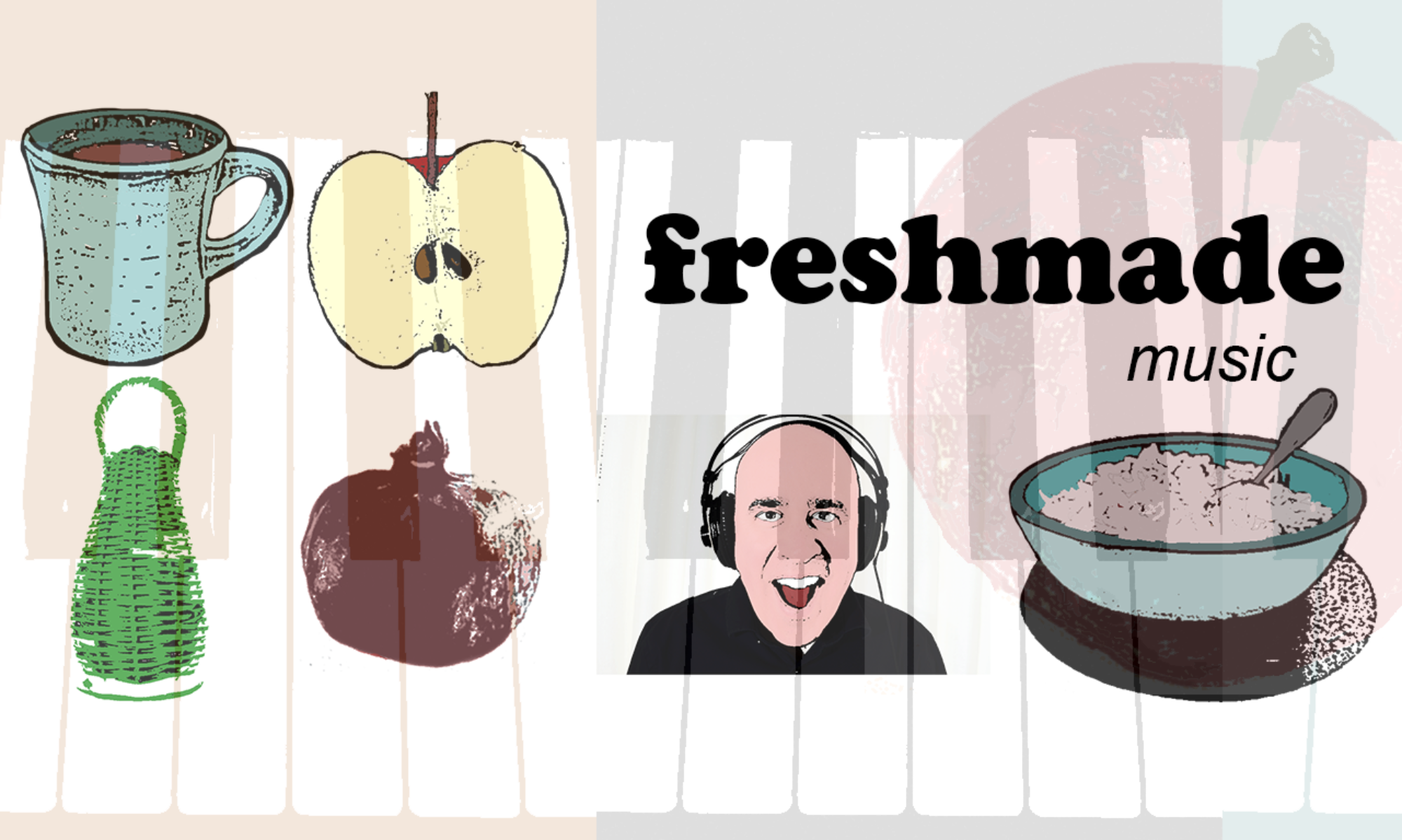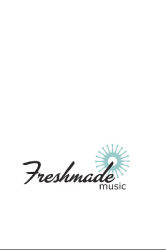The Hamsa Resonance is my music channel designed for meditation, relaxation and sleeping. I’ve created musical experiences for kids and adults. You can experience them using the Insight Timer app here:
Work more efficiently with a composer: What is an audio brief, and why do you need one?
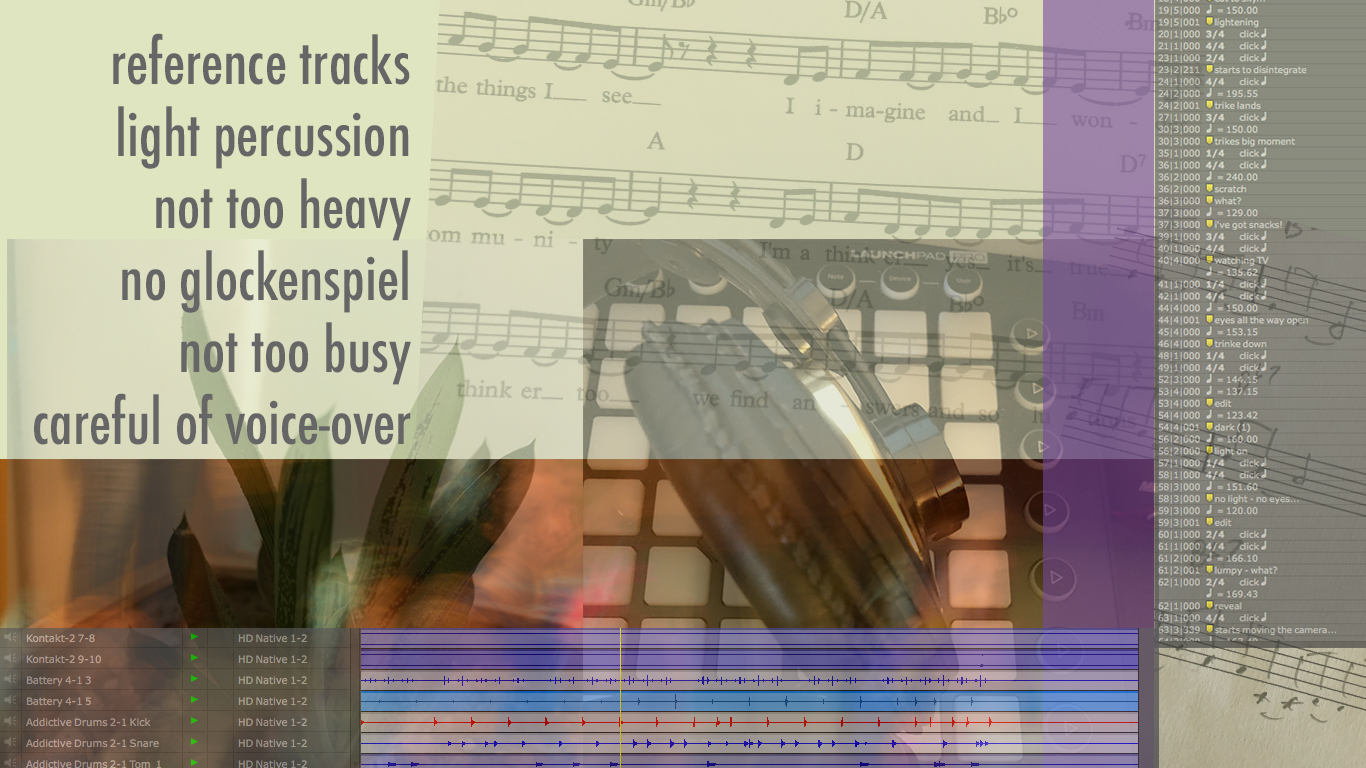
An audio brief is a road map, or recipe composers use that contains the logistical, technical, business and creative information necessary to begin creating music for a project. As a composer, I use audio briefs as a way to build consensus to make sure that everyone on the creative team agrees with all the details and the creative direction that the music is heading. The creative folks can be some combination of creator, director, writer, copywriter, producer, art director, or audio director depending on the project and industry. Usually if it’s a large group of people I’m meeting with, they have spoken and agreed on most if not all of these details. I prefer to go through each of these items, even if they seem clear to me, in case any of the details have changed.
Here’s the breakdown of the four parts I like to include in an audio brief:
• Logistical details include deadlines, track length and any required alternate versions. Many of the logistical details will be included in the business contract between the client and the composer, or in a less formal audio agreement. In most cases, I generate the audio brief once the contract or audio agreement is in place, so those details can be brought into the audio brief.
• Technical specifications can be pretty straight forward or complicated, specific to the project. They may include information like the bit rate, sample rate and audio file type, but can also include extensive audio requirements related to finalizing the track before delivery. It can get complicated pretty quickly in a video game project. Many details will be covered in the Game Design Document then incorporated and outlined in an Audio Master Document, which lists out information for all the sound assets in the game, including music, sound design and voice. No matter the complexity, getting these details ironed out early will ensure that the audio files can be easily synced and implemented upon delivery. This is especially helpful toward the end of projects when things are moving fast.
• The business details like the target market, broadcast medium (which may overlap with the technical specs) and any other research that might be helpful to take into consideration when exploring the direction of the music.
• The creative portion generally contains information related to genre, style, and mood. This step in the refining the audio brief usually requires some questions and probing. It There may be references to other audio tracks, or to artwork, which may be completed or in still in draft form. The initial brief I receive may start with something as simple as “upbeat, happy”. After a quick phone meeting with the creative team, I may amend the initial creative portion of the brief to “upbeat, happy – try ukulele, listen to the two reference tracks provided, light percussion but not too heavy, no glockenspiel, not too busy during first part of voice-over”. The second version is a lot more descriptive, right?
Most of my clients generally have a clear sense of what they want. In almost all the cases, they’ve worked on the project much longer than I have and have thought a lot about music options that they think will work. They also have a better understanding about any nuances and context, details that I will learn about if necessary as the project unfolds. My first job is to listen and consider their ideas. My second job is ask questions in order to refine the audio brief, and to make sure I can deliver the best music options possible. I also see it as my obligation to bring my years of experience to offer ideas that I think will work, asking questions like, “Have you thought of this other option?”. Since it can sometimes be difficult to figure out music just from discussing it, it’s often better to hear it. I find it helpful at the beginning of projects to write a few different ideas, a couple of short snippets that we can all examine, then figure out which one is working best and move forward.
During my audio brief meeting, I make sure to confirm all the items including the logistical and technical ones. Since projects often change, I want to make sure I have the latest updates. After I’ve confirmed all of these details over the phone, I will write up my notes into an email and send it to my clients to confirm. Once I get a confirmation from my client and I begin creating and producing music, I can move forward with the knowledge that the whole team is on board.
Creatives, what do you need from the audio brief? If you’re starting from scratch and you haven’t yet hired your composer, sketch out the details that you think your project needs and work with the composer you hire to fill in the remaining details. Also, don’t feel like you have to answer every question you have; in fact I find it can be helpful to know the list of questions or problems that my clients are trying to solve. Also remember, you don’t want to get stuck in process, you want to focus on the deliverable you’re going to receive. I find that it’s less important to my clients how I do my job of composing and producing, then whether I deliver what they’re looking for, when they’re looking for it. If they find it interesting to discuss audio production, I’m happy to explain my workflow and tools.
Composers, what do you need from an audio brief? Everything! If you’re looking through a brief that you didn’t create and anything looks unclear, or if there are acronyms you aren’t familiar with – ask! I would much rather firm up any details related to what my client wants before I start writing music, rather than deliver some music and have them point out something that isn’t consistent with the specs in the audio brief, or deliver something based on a false assumption that I made because I was too shy or embarrassed to ask a question. And as I’ve eluded to above, if the audio brief is incomplete or non-existent, I create it myself.
Audio briefs can be a helpful tool for communication. If used properly, they can be a foundation to a stable creative framework for a project and even to long lasting business relationship. I hope this explanation about audio briefs has been helpful. Do you have any questions? Are there details that you include in your workflow that I’ve missed? Please let me know!
Jerome Rossen is a composer, songwriter, producer and professional musician. For 18 years, Jerome has created music for advertising, apps, and kid’s video games. Jerome has placed his music in major TV shows like “The Bachelor” on ABC, MTV’s “The Challenge” and USA Network’s “Temptation Island”. Jerome also creates the music for the Happy Tree Friends, a very funny (though very violent) cartoon for adults and mature kids, with a huge cult following. He runs Freshmade Music, an independent audio studio. You can learn more at www.freshmademusic.com.
The Right Audio – 9 Tips For Creating Targeted Kids Game Music and Audio
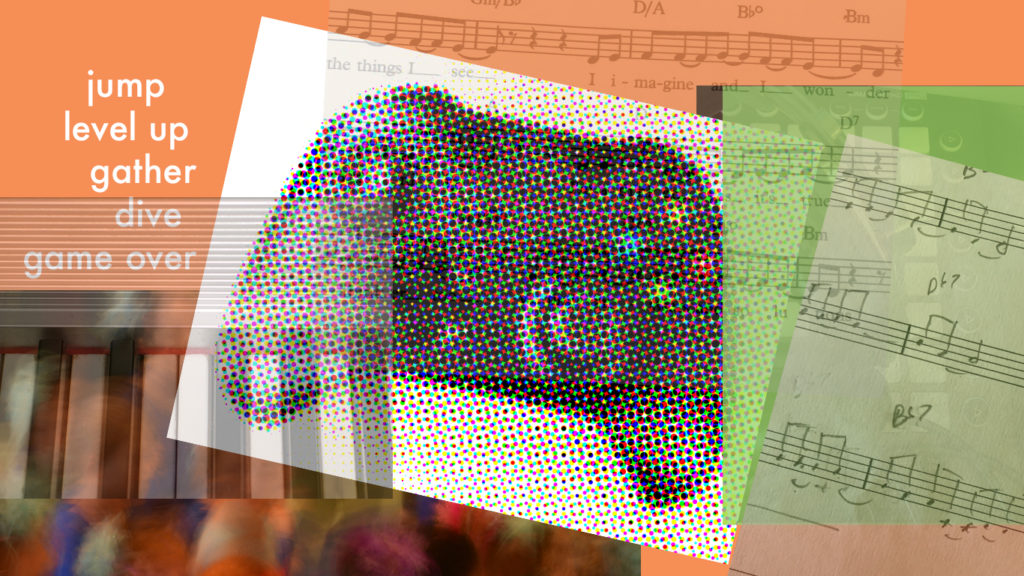
Creating and selecting music and audio for kids games has all the challenges of composing music for any game, film or TV show. Finding the right audio, and musical landscape can be a crucial component to whether the game is a success. For me, the ultimate test, after all the conversations and work, is whether kids keep the music on while they’re playing!
I have put together a handful of tips that I’ve picked up over the years that I can recommend if you need to figure out how to design, explain and/or write kids game music and audio. I’m writing this from my viewpoint as a composer and sound designer with the hope that it might help other game audio folks; and also writers, producers, game designers, audio directors, audio programmers, folks in marketing and PR, and any creative person involved in creating a kids games. My hope is that if you follow these guidelines, the music and audio in your game will greatly enhance the game, making it a critical part of the gameplay, so much so, that kids couldn’t imagine playing the game without your audio and music.
Here are my: 9 Tips for Creating Targeted Kids Game Music and Audio
- Figure out what you’re working on
When I begin a project, it’s my job to learn as much as possible about what I’m working on, beginning with the intention of the creators. I’m interested in listening, reading, and looking at everything; the game design document, any artwork (finished or not), any levels (whether they’re playable yet or not) and any relevant analytics from the marketing folks about the target market, including whether the game is a sequel. I also try to gather any and all musical references that the design team has been thinking about. If you’re a composer, plan to ask for as much as your client can give you, and be prepared to look, listen and ask questions. If you’re on the developer side, be prepared to provide these materials to your curious composers and sound designers. The more open you are to the creative folks you work with, the more likely they are to be on target with their work. While there is a certain amount of mind-reading that happens with my clients, I prefer to be a translator – to gain inspiration from narrative, visuals and design elements that my client has provided – translating all of these materials into the right audio. - Get buy-in about what you’re going to create
Once I figure out what I’m going to work on, I compile an audio brief, a document that outlines all the information that I’ve collected (see #1), with clear directives about what I’m going to write, then I share it with my client. By sharing this information with my client, I can be clear with them about what I’m intending to write, and they can share the audio brief with members of their team, so they all know what to expect. Communication is so very important during the whole process (https://www.linkedin.com/pulse/how-speak-music-5-tips-communicating-composer-jerome-rossen/). Establishing an open line of communication with your creative team from the beginning is very important. - Be clear like a laser
When you’re in planning mode, creating or discussing an audio brief, clarity of genre and style will always be helpful, including specific genres, artists and tracks. If I have a client who tells me they want the music to be fun, I’m going to ask for more specific information. Do they mean something bright and cheery with ukulele and percussion? A mariachi band? A piano playing ragtime? You get the idea. These examples might all be fun in the right context, but none may fit what my client has in mind. If my intention is to be clear with genres, I will have a better chance to deliver music that will fit the game and that the client likes. - Write up – Aim for a few years higher
In my experience with my own kids and as a guest artist in the classroom (K-12), kids want to aspire beyond their age. They want to read about the lives of kids a few years older. They don’t like to feel babied. It’s the same with music written for them. For preschool games, kids don’t want the music to feel too young. For young elementary games K-2, the kids don’t want the games to feel too kiddie-like. And for 3rd-5th and tweens, for instance, if you’re game is reaching from a pop music genre, your best bet is probably to reach for current pop music as a model. When in doubt, add a bit more sophistication to the music and you’ll be on track. - Try to narrow the target market
Often game designers and marketing folks have an intention that a kids game will try to reach a really broad range of kids; some games are successful at this. When I approach a game where my client says they want to reach K-5, I really have to dig in and figure out whether the younger, K-2nd grade kids are playing the game differently than the 3rd-6th graders. If so, I have to make a decision with the game designers of which narrow group to write for. In this example, it would likely be best to write for the older group, the 3rd-5th grade audience, without alienating the younger kids. Also, I find an interesting thing happens – when I’m successful focusing on a narrow target market, the audio will often work well for wider audience as well. - Don’t water down
Kids can handle sophisticated music and audio, in fact they’re expecting it. Whether you like it or not, your game is competing with all other media out there. This includes movies and tv shows with huge audio budgets, that may contain full orchestras and high-end pop producers. No matter what you audio budget is, your game can have sophisticated, well designed music and audio if you have the right preparation and the right team from the beginning. - Scary, minor and major
If there are realistic events happening in-game, then it may be completely appropriate for them to sound realistic… but be careful, especially for the younger audiences, sometimes those sounds need to be tempered. For example, if there is a space explosion in a preschool game, it might be more effective for it to sound more fun than scary, with some synths added in for musical sound design. Be mindful about writing in minor keys. Believe it or not, only a small percentage of the music I’ve created for young kids games (K-2 and younger) includes music in minor keys. There is one game developer that tries it’s best to avoid using minor keys altogether! The only case I can remember using a minor key for this developer was in a game that helps kids identify emotions – I used a minor key for “scared” and “frustrated”, but not a handful of other emotions. In general, keep it major if you can for the young ones. - Pay attention to the game design
Keeping track of the basic game design principles of the game will help you figure out how complex your music should be, in any given level. How long will the player be on this level? How complex is this level? Is there any data from play-testing? As far as length of track, if it’s a really easy level, and the player won’t be there long, then it may not make sense to use a long, 1 minute looping track. On the other hand, if it’s really hard and the player will be there longer, it might make sense to provide more music so that the loop doesn’t get boring. As far as difficulty, make sure the music pairs properly with the complexity of the game. I prefer to use less complex music, when the game is more complex. For instance if you’re working on a really complicated puzzle, my caveman brain gets distracted if there’s too much other stimulation. Complex levels may be well served from minimal or no melody, and fast tempos. Remember, the music is here to serve and enhance the game experience, not the other way around. - Use odd and vintage genres wisely
I love odd genres, and I love mixing them. It’s OK to use all kinds of genres, but make sure you’re being mindful in the way you’re using them. I make sure I have a reason to use the genre I select – perhaps cuing off of the geography, landscape or shift in the narrative. Also, I think it’s great to throw a bone to the parents or caregivers now and then, as long as you’re aware that you might be including a genre that you know the kids may not understand. Remember the adults are often listening but not playing the game. Be mindful that a parent or adult might ask to turn the music down, or ask the kids to stop playing the game (G-d forbid!).
I hope these tips are helpful to you as you move forward creating music and audio for your kids game. I hope that they help you make your audio essential to your game. If you have any questions about any of the tips, please let me know – I’d love to discuss them with you!
Jerome Rossen is a composer, songwriter, producer and professional musician. For 18, Jerome has created music for advertising, apps, and kid’s video games. Jerome has created music for Originator Kids “Math Tango: Starbase”, Leapfrog and Spinmaster. Jerome has placed his music in major TV shows like “The Bachelor” on ABC and MTV’s “The Challenge”. Jerome also creates the music for the Happy Tree Friends, a very funny (though very violent) cartoon for adults and mature kids, with a huge cult following. He runs Freshmade Music, an independent audio studio.
How To Speak Music – 5 Tips For Communicating With A Composer
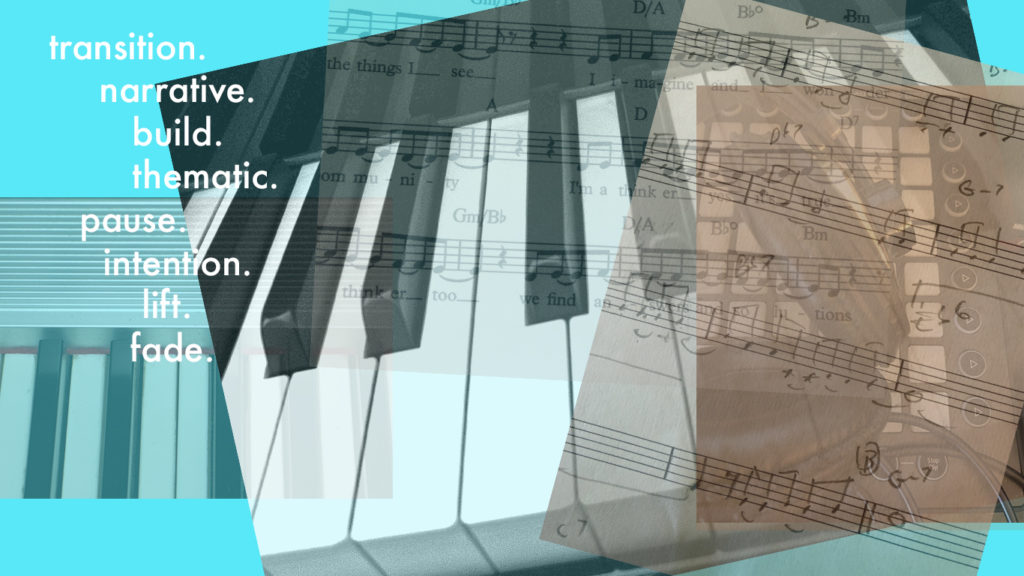
Pairing music with video is a really exciting process, whether you’re working in animation, advertising, film, television or video games. This step in production usually means that you’re nearing the completion of your project. Perhaps congratulations are in order? Finding the right music for your project is a little tricky, but if you keep a few things in mind and you add a dose of patience, hopefully you’ll get the results you’re looking for.
As a composer and music producer, I interface with a wide variety of folks from a variety of backgrounds who make up my client base. They often have exponentially more experience than I do in art, design, writing and business. They may be a super-talented art director, editor, visionary writer, producer or other type of content creator. No matter what their title is, the job of finding music often falls into the lap of the most creative member or members on the team. In almost every case, everyone on the team has a strong passion for music, and they know from the start exactly what they think will work. Sometimes the hardest part for the team is trying to communicate the musical vision to the person who will be bringing it into fruition. That’s where I come in.
In this article, I am addressing the process of working with a composer to create custom music. I recognize that working with a music library is also a viable option for many creatives – that is a somewhat different process.
From the beginning of the project, it’s my job to open a clear line of communication about what exactly we all want for the music, to determine who the final decision makers are, and to figure out a way to keep things on track.
In the beginning, it’s often helpful to get very granular details by sharing existing examples and quick, messy custom prototypes to really hone in on the right direction. Many projects move fast, and sometimes projects change in the middle, so getting that communication going is important for any tweaks or adjustments that we decide on to get the music working well, as fast as possible.
Once in awhile during the review process, I’ll get feedback such as “It’s not working” or “I don’t like it.” That’s clearly not enough feedback. If that’s all I get, I have to do my best to draw my client out more. I don’t need them to tell me their hopes, fears and dreams, but I do need to figure out what music is going to work, so I don’t throw out the good parts and then I need to figure out what isn’t working with the music, so I can fix it.
Very often my job is to translate emotional terms, narrative structure and thematic elements into music.
Here are 5 recommendations for communicating with a composer:
- Use descriptive language. It’s helpful to use emotional words, and try to tie them in to thematic elements in your project. It’s great to use the language that originally inspired you in the creation of your masterpiece. These ideas can be foundational for the music as well. For instance, if you need the music to build right after the sunrise, or if you need the music to pause when the main character looks away because she’s remembering how much she misses her first pet Sparkles… those are the elements to concentrate on and to communicate about. Sometimes you need the music to track a character’s mood, or you need the music to play against what’s happening on the screen.
- Be careful of using musical terms. Musical terms generally have very precise meanings, and if not used correctly, they can be confusing to your composer and muddy up your intention and in turn, your music track. I’ve been in situations where a creative person recommends that they want something raised up an octave, but they really mean just a higher key – or that they want something slower, but they actually mean in a minor key. No worries. It’s my job to translate, so if you’re not sure, it’s OK to say that you’re not sure, we’ll figure it out together.
- Try to have specific existing music examples. If my client doesn’t provide examples at the beginning of the project, I frequently put together a quick playlist that we review together. These examples allow us to begin a conversation about genre, instrumentation, tempo, and feel and anything else that might be relevant to the project – and since we’re listening to the same examples, we can generally get the majority of the information that I need to create an audio brief it one doesn’t already exist, and can begin composing. This process is also a great way to begin our clear line of communication.
- Be prepared to provide data. No matter what you’re working on, you’ve already worked on it longer than the composer you’re bringing in. You likely have some valuable insights to convey about audience, target markets and your competition or industry. If it’s a commercial, you might have some analytics that you’ve rolled into your process already. If you’re working on TV show or film, you might either have some focus group data or at least some anecdotal ideas that you are drawing from. Your composer doesn’t necessarily need raw data, but giving them a brief summary of this information can be a key insight into why you’re making some of the choices you’re making about music. This data may also inform some of the decisions the composer makes in one direction or another.
- Be open. As in any creative process, you may ask for something and realize that once it’s compiled, you don’t like it. No worries! Pairing music to picture is an iterative process. I find it helpful to figure out what is and isn’t working and to move quickly forward from that information. It can be helpful in these situations to focus on the outcome, not necessarily the process. If you’re focusing on narrative, subject matter and how you want a scene to be conveyed, chances are that you’re going to be in the ballpark of finding the right music. And sometimes even small tweaks can make all the difference between what isn’t working too well, and what’s totally working.
Pairing music with video is an exciting process. If you have the chance to collaborate with a composer who is a willing partner and good listener, then there is a high likelihood that the composer will take great care with your project – the same amount of great care that you have taken to get it this far.
I received feedback from a longtime client a few years ago. Every week, when I sent over my full orchestrations and the final mixes of my music synced to picture to the audio director, this was usually cause for a small crowd of people who worked on this project to gather around the audio director’s mixing console and watch it, some watching the whole project for the first time. It was only then, and only once the music was synced that the project felt finished. That, to me, is how I know when we have the right music.
Good luck, and let me know how your experience with of communicating with a composer goes!
Jerome Rossen is a composer, songwriter, producer and professional musician. For 18, Jerome has created music for advertising, apps, and kid’s video games. Jerome has placed his music in major TV shows like “The Bachelor” on ABC and MTV’s “The Challenge”. Jerome also creates the music for the Happy Tree Friends, a very funny (though very violent) cartoon for adults and mature kids, with a huge cult following. He runs Freshmade Music, an independent audio studio. You can learn more at www.freshmademusic.com.
MathTango – Starbase: Music and Sound Design

I’ve really had fun creating the music and sound design for the update of MathTango Starbase. It’s been great working with audio producer, Richard Warp from Intonic Studios, and the team from Originator. It’s a featured app in the Apple App Store. If you want to brush up on your multiplication, or if you know a child who does, check it out!
MathTango by Originator Inc.
